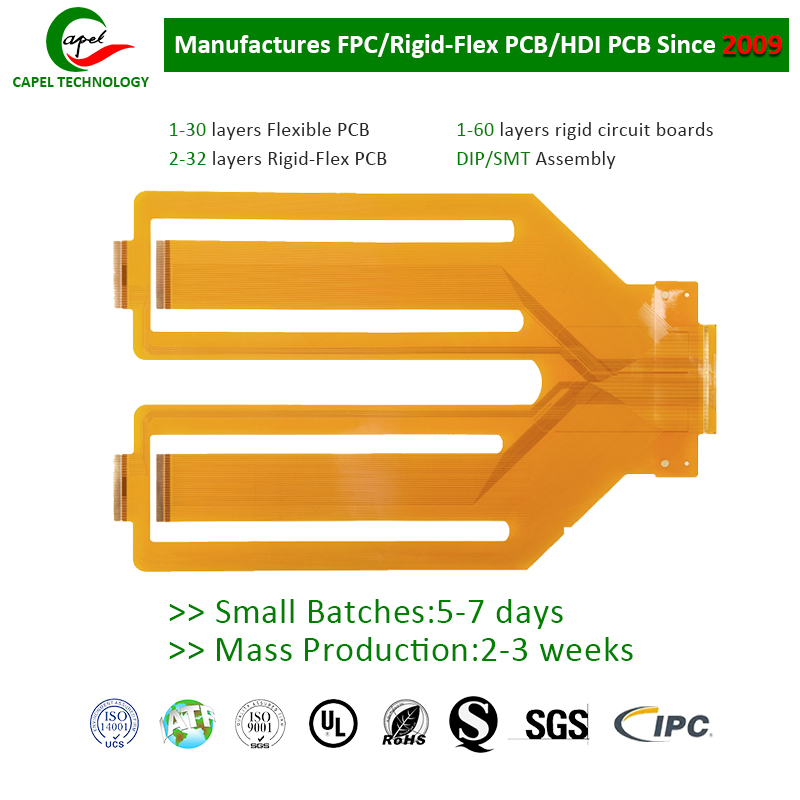In this blog, we will explore the differences between FR4 and polyimide materials and their impact on flex circuit design and performance.
Flexible circuits, also known as flexible printed circuits (FPC), have become an integral part of modern electronics due to their ability to bend and twist. These circuits are widely used in applications such as smartphones, wearable devices, automotive electronics, and medical devices. The materials used in flexible circuit manufacturing play a vital role in their performance and functionality. Two materials commonly used in flexible circuits are FR4 and polyimide.
FR4 stands for Flame Retardant 4 and is a fiberglass reinforced epoxy laminate. It is widely used as a base material for rigid printed circuit boards (PCBs). However, FR4 can also be used in flexible circuits, albeit with limitations. The main advantages of FR4 are its high mechanical strength and stability, making it suitable for applications where stiffness is important. It is also relatively inexpensive compared to other materials used in flexible circuits. FR4 has excellent electrical insulation properties and good high temperature resistance. However, due to its rigidity, it is not as flexible as other materials such as polyimide.
Polyimide, on the other hand, is a high-performance polymer that offers exceptional flexibility. It is a thermoset material that can withstand high temperatures and is suitable for applications requiring heat resistance. Polyimide is often chosen for use in flexible circuits due to its excellent flexibility and durability. It can be bent, twisted and folded without affecting the performance of the circuit. Polyimide also has good electrical insulation properties and a low dielectric constant, which is beneficial for high-frequency applications. However, polyimide is generally more expensive than FR4 and its mechanical strength may be lower in comparison.
Both FR4 and polyimide have their own advantages and limitations when it comes to manufacturing processes. FR4 is typically manufactured using a subtractive process where excess copper is etched away to create the desired circuit pattern. This process is mature and widely used in the PCB industry. Polyimide, on the other hand, is most commonly manufactured using an additive process, which involves depositing thin layers of copper onto a substrate to build circuit patterns. The process enables finer conductor traces and tighter spacing, making it suitable for high-density flexible circuits.
In terms of performance, the choice between FR4 and polyimide depends on the specific requirements of the application. FR4 is ideal for applications where rigidity and mechanical strength are critical, such as automotive electronics. It has good thermal stability and can withstand high temperature environments. However, its limited flexibility may not be suitable for applications that require bending or folding, such as wearable devices. Polyimide, on the other hand, excels in applications that require flexibility and durability. Its ability to withstand repeated bending makes it ideal for applications involving continuous motion or vibration, such as medical equipment and aerospace electronics.
In summary, the choice of FR4 and polyimide materials in flexible circuits depends on the specific requirements of the application. FR4 has high mechanical strength and stability, but less flexibility. Polyimide, on the other hand, offers superior flexibility and durability but can be more expensive. Understanding the differences between these materials is critical to designing and manufacturing flexible circuits that meet required performance and functionality. Whether it’s a smartphone, wearable or medical device, choosing the right materials is critical to the success of flexible circuits.
Post time: Oct-11-2023
Back







